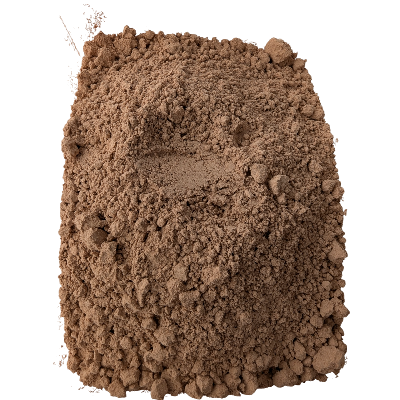
粉香是什么以及如何使用?
十月 20, 2024 1 读
小时候,我去朋友家做客。我亲眼目睹了他家的仪式。桌子上放着陶器,陶器里面燃烧着木炭。然后,一个大人打开一个罐子,从罐子里舀出少量粉末,慢慢地撒进陶器里。我立刻看到烟雾飘散在空气中,过了一会儿,我闻到整个房间都有一股木香。那种粉末就是香粉。后来我才知道, 燃烧香粉会将芳香分子以烟雾的形式释放到空气中。烟雾具有药理作用。有些人用这种方法治疗呼吸系统疾病和肌肉紧张,以及给这个地方带来一些“好运和财富”。很难完全解释这种积极的影响。这就是为什么你经常听说燃烧香粉会带来正能量。
粉香:
当我们将植物材料磨成粉末时,我们会得到一种香粉。如果我们对不同的植物做同样的事情,我们会得到不同的香粉。植物材料包括但不限于乳香、没药、劳丹脂、安息香、肉桂、雪松、檀香、沉香和圣木。
粉香是一种精细研磨的香,通常由芳香药草、香料、树脂和沉香混合而成。与传统的香棒或香锥不同,粉香松散,用途多样。它通常撒在持续的热源上,例如香炭,以烟雾的形式释放香味。这种燃烧方式可使香味充满整个空间,散发出浓郁诱人的香气,常用于冥想、放松或增强房间氛围。
有些人尝试点燃香粉,希望房间充满令人平静的香味,但很快发现这不起作用。有些人甚至将香粉撒在香炉上,试图点燃它,但火焰却噼啪作响,然后熄灭了。那么可能出了什么问题呢?
并非所有香料都能自由燃烧。
我曾尝试在持续热源(如木炭或电炉)中燃烧多种香粉。有些树脂很难单独燃烧,或需要小心处理才能达到预期效果。
例如,安息香树脂燃烧速度快,单独使用时会产生刺鼻的烟雾,除非与檀香或肉桂等其他成分混合,否则味道会不太好闻。如果没有适当准备或与其他物质混合,安息香也容易燃烧不均匀或燃烧过快。没药和乳香等树脂如果暴露在潮湿或低温下会失去香味,这会妨碍它们在燃烧过程中有效释放香气的能力。
我将列出一些其他植物材料(包括树脂和木材),由于它们的特性或天然成分,燃烧可能具有挑战性。
-
柯巴脂:这种树脂来自布雷萨拉树科的树木,在中美洲的传统仪式中广为人知。然而,与安息香一样,柯巴脂很难均匀燃烧,因为它在完全燃烧之前会融化并产生粘性残留物。它通常需要在较高的温度或在热炭上精心准备。
-
龙血:龙血取自各种植物的树脂,包括龙血树和黄花树属植物,是另一种难以燃烧的物质。它燃烧时非常剧烈,但如果与檀香或乳香等燃烧速度较慢的材料混合不当,很快就会形成浓密而略带刺鼻的烟雾。
-
檀香木碎片:虽然檀香木是一种经典的香材料,但由于其密度和保湿性,其木屑很难直接燃烧。通常建议使用细磨檀香木与其他成分混合或用木炭加热以缓慢释放其香气。
-
雪松木:雪松木通常以小木片或刨花的形式使用,如果直接暴露在火焰或高温下,有时会燃烧不均匀或燃烧得太快。与檀香木一样,它经常被用作混合物的一部分,以保持气味的稳定释放。
-
白松香树脂:这种树脂以其强烈的绿色木质香气而闻名,但由于其质地粘稠,燃烧起来很困难。它通常以粉末形式使用,或与其他树脂和木粉混合使用,以促进更均匀的燃烧。
为何使用粉香?
它可以帮助您正确地烧香并制作自己的香。
|
植物材料 |
研磨前 |
研磨后 |
|
|
柯巴脂 |
由于粘性残留物和熔化导致燃烧不均匀。 |
燃烧更均匀,烟雾芳香稳定 |
|
|
龙血 |
燃烧剧烈而迅速,释放出浓烟。 |
以可控的速率燃烧,减少剧烈燃烧 |
|
|
檀香木片 |
由于密度和保湿性,很难直接燃烧。 |
燃烧缓慢均匀,逐渐释放香气 |
|
|
雪松木 |
直接暴露在火焰下时,燃烧不均匀且迅速 |
燃烧更均匀,香味持续释放 |
|
|
白松香树脂 |
质地粘稠,燃烧不均匀 |
燃烧均匀,可以更好地控制气味的释放 |
如何焚烧粉香
您需要的材料:
-
粉末香:可由磨碎的芳香药草、树脂、木材和其他芳香成分制成。 沉香粉末香因其独特的甜辣木香味而广受欢迎。

-
香炭盘:持续的热源,为香粉的燃烧提供理想的条件。
-
香炉或耐热盘:可以是传统的碗或任何用于容纳燃烧的木炭和粉末的耐热容器。
-
钳子或镊子:用于处理热炭盘。

-
打火机或火柴:点燃炭盘。
逐步说明:
-
准备香炉:首先将香炭盘放在耐热盘或传统香炉的中央。确保香炉放在稳定、不易燃的表面上,以防止发生任何事故。
-
点燃木炭:用钳子小心地夹住木炭盘,用打火机或火柴点燃其边缘。继续保持火焰,直到木炭开始燃烧,其表面形成一小层灰烬。这表明木炭已正确点燃,并将提供持续的热源。

-
让木炭沉淀:等待大约一到两分钟,让木炭完全变灰变热。等待的时间可以确保木炭均匀受热,这对于粉末香的均匀燃烧至关重要。木炭盘的高温均匀表面使香粉可以自由燃烧。注意,热木炭被埋在白灰下,以保持最佳温度
-
添加云母板:如上所述,一些树脂在燃烧时会融化,可能会“扑灭”木炭火。为了防止这种情况,您可以使用云母板。像这样的标准云母板应该可以。但是如果你有一块大木炭,你可能需要一块更大的云母板。

-
在云母板上添加香粉:现在木炭已经准备好了,将少量香粉轻轻撒在木炭盘顶部的云母板上。您可以使用勺子或简单地用手指捏一下粉末。确保不要覆盖整个木炭表面,因为粉末需要空间来接收持续的热量。通常,薄薄一层香粉就足够了。
-
体验香气:当粉末香在云母板上加热时,它会向空气中释放出独特的香气。热量将芳香成分(草药、树脂和其他芳香元素)转化为芳香烟雾,营造出宁静平和的氛围。请注意使用的粉末量,因为如果一次添加太多,粉末可能会很快燃烧。
-
按需调整:您可以根据需要继续添加少量粉末香以保持香味。粉末香允许定制,因此您可以混合不同的香粉来创造自己独特的香气。例如,将沉香粉与檀香粉混合可以增强香味的深度,营造出浓郁、温暖的氛围。
其他提示:
-
自由混合:粉末香是喜欢尝试的人的理想选择。您可以混合不同的粉末,以创建适合您心情或环境的自定义混合物。您可以将粉末包装得更紧密以获得更浓郁的香味,也可以松散地使用以获得更淡的香味。
-
适当通风:确保房间通风良好,以使烟雾均匀分散,避免产生浓密、压倒性的氛围。
-
香炉和安全:务必使用合适的香炉或耐热盘来盛放木炭。确保将其放置在远离易燃物品的地方,并将香炉放在稳定的表面上。
如何用水、香粉和 Shoyeido Toh Makkoh 制作香粉
无需添加油(香油或精油),即可使用香粉或Shoyeido Toh Makkoh等粘合剂制作香粉熏香,这些粘合剂是传统天然的粘合剂。通过这种方法,您可以制作出无需添加油即可持续燃烧的香棒或香锥。
您需要的材料:
-
粉末香:可以是预先制作的混合物,也可以是粉末状草药、树脂和其他香成分的混合物。
-
香粉或Shoyeido Toh Makkoh :这些是来自天然来源的粘合剂。香粉通常由 Litsea glutinosa 树皮制成,而 Shoyeido Toh Makkoh 则由 Machilus Thunbergii 树制成。

-
水:用来混合并粘合香料成分。
-
搅拌碗:混合原料。
-
量匙或量秤:准确量出配料。
-
模具或塑形工具:如果您要制作锥体或棍棒。或者,您可以用手塑形。
-
干燥架或铺有羊皮纸的平坦表面。
逐步说明:
-
测量成分:首先测量粉末香、香粉或 Shoyeido Toh Makkoh 和水。制作香棒或香锥的一般比例是 3:1:1——三份粉末香、一份香粉(或 Shoyeido Toh Makkoh)和一份水。但是,根据您想要的稠度,此比例可能会略有不同。
测量示例:
-
3汤匙粉香
-
1 汤匙香粉(或 Shoyeido Toh Makkoh)
-
1汤匙水
-
-
混合香粉和粘合剂:在搅拌碗中,将香粉与香粉或 Shoyeido Toh Makkoh 混合。确保粉末充分混合。香粉(或 Shoyeido Toh Makkoh)可充当粘合剂,在加入水后可帮助混合物粘在一起。
-
逐渐加水:慢慢地将水一点一点地加入干混合物中,同时不断搅拌。目标是达到面团般的稠度,既不太粘稠又能压在一起。如果混合物太干、太脆,每次加几滴水,直到达到所需的质地。如果变得太粘,再加一点水。如果太松散,再加些香粉
提示:混合物的感觉应该类似于粘土或面团,容易成型而不会破裂。
-
制作香棒或香锥:
-
制作香棒:取一小块面团,在手掌间将其揉成细而均匀的香棒。如果您有香棒模具,也可以使用,以达到均匀的厚度。
-
制作香锥:捏碎面团并将其揉成小球。然后,通过按压并将一端变细,将小球轻轻塑造成锥体。
提示:确保棍子或锥体不要太粗,因为这可能会妨碍燃烧过程。
-
-
干燥香:将成型的香棒或香锥放在干燥架或铺有羊皮纸的平面上。将它们放在阴凉处干燥约 1 至 2 天,或直到它们完全变硬。彻底干燥它们很重要,以确保它们燃烧均匀。
注意:避免阳光直射,因为这会导致香破裂或过快干燥。
-
测试和提炼:干燥后,用火烧几片来测试。点燃顶端,让火焰燃烧,然后轻轻吹灭。香应该会发出一股稳定的芳香烟雾。如果您发现香燃烧得不好,请考虑调整香粉或 Shoyeido Toh Makkoh 的比例,以使混合物具有更好的凝聚力。
其他提示:
-
调整比例:所需粘合剂的量可能取决于您使用的粉末香的类型。乳香或没药等树脂可能需要更多粘合剂,而细磨的草药可能需要较少的粘合剂。
-
定制混合物:您可以尝试不同的粉末组合来创建定制混合物。只需确保粉末研磨得细腻,以便与粘合剂均匀混合即可。
-
储存:将完成的香存放在密封容器中,以保持其香味,直到您准备使用它。
留个言
张贴前管理员会先审核您的留言




